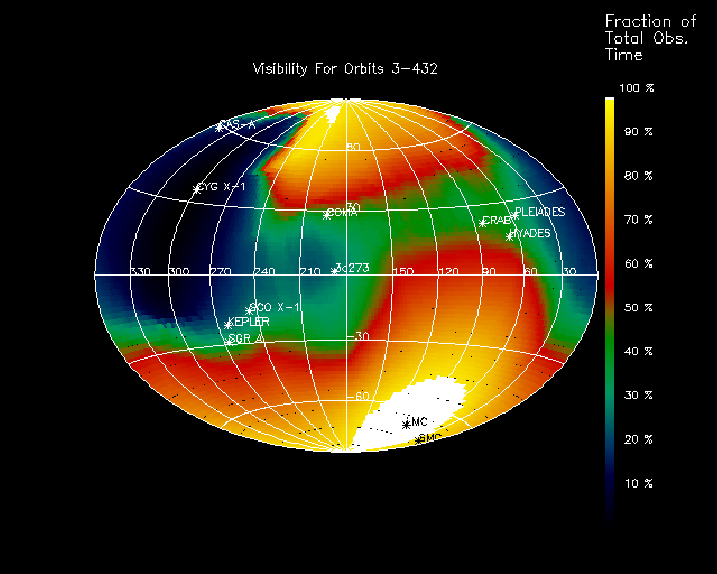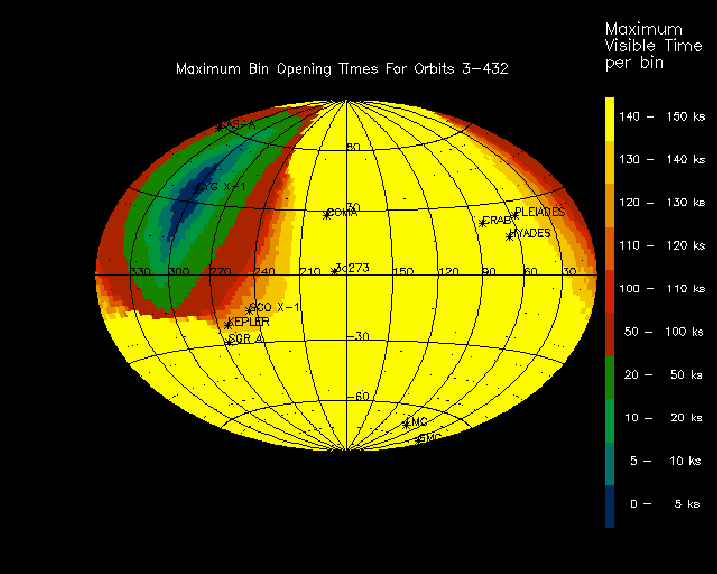All visibility information provided here and also by the XMM Target Visibility Tool is currently based on an expected launch date of 2000, January 21.
Target visibility should always be checked using the XMM Target Visibility Tool,
which is located at the URL
http://astro.estec.esa.nl/XMM/user/vis/vis_top.html.
Currently, it contains information for orbits 3-430 after launch, i.e.
the time period for AO-1 observations. Fig. 81 displays
only a first-order approximation of the sky visibility during this time.
It is shown for illustrative purposes and should be used only as a rough
guideline to assess whether any visibility problems, in particular in the
dark area around CygX-1, might exist, but not for quantitative statements.
The map is not accurate, because it is based on
![]() bins. Since a whole bin is rejected even if only a tiny fraction of it
is affected by an observing constraint (like e.g., bright source avoidance),
the actual visibility is underestimated.
bins. Since a whole bin is rejected even if only a tiny fraction of it
is affected by an observing constraint (like e.g., bright source avoidance),
the actual visibility is underestimated.
 |
The XMM Target Visibility Tool determines the visibility, if any, for certain target coordinates under configurable conditions. Note that basic parameters, like e.g., avoidance angles, should not be changed when running it. The defaults represent the values that are actually used for satellite operation. More details are provided by the XMM Target Visibility Tool online help.
Fig. 82 is a complementary representation of those areas on
the sky for which there is no adequate visibility during the first
430 orbits of the XMM mission. Note that, despite its appearance, this
is not just an inverted version of Fig. 81. It shows areas
for which a certain maximum continuous target visibility is not reached in
any orbit (up to orbit 430). Again, this image is only a first-order
approximation, based on a ![]() grid. For more accurate information
for given target coordinates, the XMM Target Visibility Tool must be used. Targets
for which no adequate visibility is available during the first two years
in orbit should be proposed at a later AO.
grid. For more accurate information
for given target coordinates, the XMM Target Visibility Tool must be used. Targets
for which no adequate visibility is available during the first two years
in orbit should be proposed at a later AO.
 |